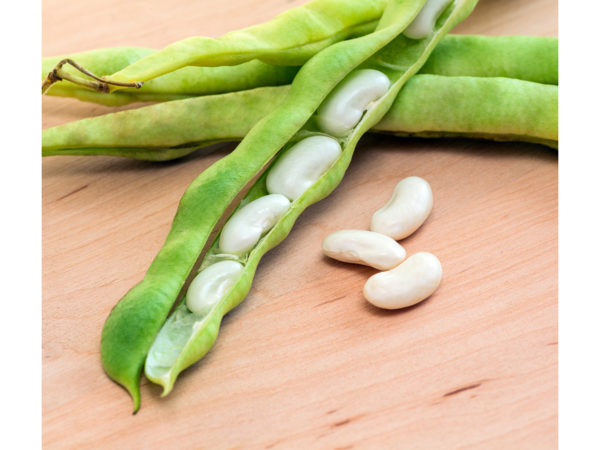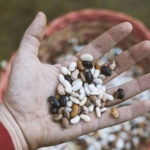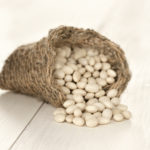Cooking With Legumes: Lima Beans

Lima beans are thought to date back to 5,000 BC and originated in the Andean region of South America. They are named after Lima, Peru, which is in the region where they were discovered by the Spanish in the 1500s. Through trade, limas eventually made their way to Europe, Asia and Africa, as well as to North America, where they became a Native American dietary staple and were often enjoyed along with corn in a dish called succotash. Their size and heartiness make lima beans an excellent choice for soups and stews.
It’s a misconception that the smaller varieties of lima beans are merely young limas. In fact, there are two distinct species of lima beans: the smaller – baby – limas, known as the Sieva type (Phaseolus lunatus), and the larger limas, known as butter beans, Giant Peruvian Limas or the Fordhook type (Phaseolus limensis), which are about double the size of baby limas. (Note: in the American South, the Sieva variety is commonly referred to as baby butter beans, or even just butter beans.)
Both types of lima beans are known for their rich, buttery, starchy texture and flavor, although the large, Fordhook variety is the starchier and meatier of the two, while baby limas are more delicate in flavor. Lima beans are most commonly green or cream-colored, though plenty of color varieties exist. They grow in flat, oblong pods, each holding two to four beans. When you buy dried limas at the store, they are already shelled.
Lima beans are loaded with fiber – both soluble and insoluble – with one cup, cooked, providing over 50 percent of the Daily Value. That same amount of limas also provides a whopping 188 percent of the Daily Value for the trace mineral molybdenum, which detoxifies sulfites in the body – a boon to those who are sensitive to sulfite preservatives in food. However, be aware that, though you may sometimes see them served raw in their pods, similar to edamame, lima beans should not be eaten in their uncooked form. They contain a cyanide compound that is only deactivated by cooking.
Cooking time: 60 minutes
Liquid per cup of legume: 4 cups
How to cook lima beans: Soak overnight. Drain water and replace with fresh, cold water for cooking. Place on stove and bring to a boil in a pot with a lid. Once boiling, reduce to a simmer, tilting the lid slightly to allow steam to escape, and leave to cook for up to 60 minutes, or until tender.













